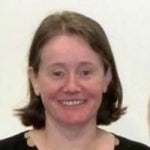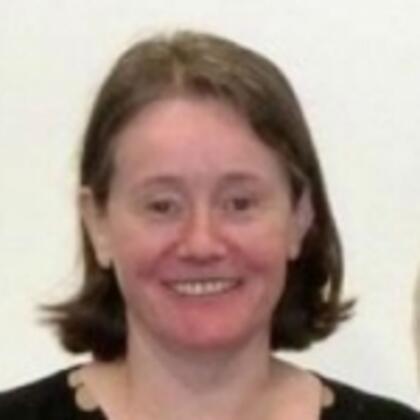Standing up for Fatigue
Share
- Details
- Text
- Audio
- Downloads
- Extra Reading
This second lecture on ME/CFS complements the lecture of 5 May 2015, providing an overview of new and exciting research developments into the complex, long-term chronic illness.
The lecture will give insight into our understanding of fatigue and the implications for one of the many symptoms experienced by people with CFS/ME.
Download Text
26 May 2015
Standing Up for Fatigue
Professor Julia Newton
Professor Jason Ellis
Over the next 20 minutes I will quickly recap the talk given by Dr Alistair Miller three weeks ago where he gave some background to the epidemiology and aetiology of fatigue and CFS, so I am just going to refresh a little of that to set the scene for those of you who perhaps were not able to make Alistair’s talk.
I am then going to move on to talk about autonomic dysfunction which is a particular area of academic interest for me, and then to emphasise some of the recent and current research work that’s being performed at Newcastle University. We will then move on to the talk from my colleague Professor Jason Ellis. Jason and I work very closely together in the North East of England, me at Newcastle University and he at Northumbria University, less than a mile away; Jason is going to talk about the work that we’ve been carrying out around sleep.
So there will be two particular areas of work that we will emphasise today, that of autonomic dysfunction and sleep in CFS.
Just to reiterate from Dr Miller’s talk, can I remind you what CFS/ME is? It is classified by the World Health Organisation as a neurological disorder. It remains medically unexplained so when we see patients in the clinic we don’t have a diagnostic test, a blood test or a scan that we can do, to make the diagnosis; instead, the diagnosis is made on the basis of symptoms.
It is however well recognised that CFS/ME is physiologically distinct from depression and there have been a large number of scientific studies published where immunological, neurological and endocrine abnormalities have been identified. Increasingly, these abnormalities are consistent and reproducible.
In terms of making the diagnosis of CFS/ME, it is, as I have said, a cluster of symptoms. Patients have severe debilitating fatigue which causes interference with normal functioning and the duration of this is at least four months. There is no evidence of other medical or psychiatric problems and typically it is something that occurs after a precipitant such as a viral illness. There are no pointers on examination or history to an alternative diagnosis and in all patients the blood tests performed in line with the NICE guideline are normal.
It is important to recognise, and particularly for those of you who have not experienced fatigue yourself, that fatigue is not the same as tiredness. The symptom that is described by patients with CFS, ME or fatigue-associated chronic diseases is not relieved by sleep or rest. In addition to fatigue being found in CFS and ME, it is increasingly being recognised in association with a broad range of chronic medical illnesses. As we begin to understand those illnesses where it is very commonly found, this is beginning to give us greater insight into the underlying pathophysiology of this symptom of fatigue.
To give you an indication of the different types of diseases where fatigue is recognised we can find it in association with connective tissue disorders, so:
· musculoskeletal conditions such as rheumatoid arthritis, polymyocytis, lupus, primary Sjogrens syndrome
· chronic infections such as a toxoplasma, EBV, bruscella
· autoimmune diseases such as thyroid disease, primary biliary cirrhosis, coeliac disease
· in primary sleep disorders, fatigue is a very common description by patients, in association with sleep apnoea and restless leg syndrome;
· and then other neurological problems such as multiple sclerosis, and Parkinson’s disease.
In Newcastle we have pulled together clinicians and researchers interested in the symptom of fatigue into what is now a designated Fatigue Research Centre; a fully-fledged University Research Centre which works across the faculties at Newcastle University. We are beginning to utilise this shared experience to push faster and more forcefully around our understanding and management of the symptom of fatigue.
This comes from our recognition in Newcastle in a paper published in the Quarterly Journal of Medicine (2009, Jones & Newton), where we asked patients from a range of different fatigue associated diseases, including CFS/ME, to score their fatigue using a tool called the fatigue impact scale. When they did this we were able to confirm that there was a significant shared experience of the symptom of fatigue across all these apparently different diseases.
This is interesting because it suggests that the fatigue experienced by a patient with the autoimmune disease primary biliary cirrhosis is the same as the experience of patients with CFS, fatty liver disease or Parkinson’s disease, for example. This means that, if we learn things from one fatigue associated with chronic disease, we could then potentially apply this knowledge to other fatigue associated diseases, therefore enhancing our ability to understand the pathophysiology and translate this into improvements in clinical management.
In terms of how common CFS/ME is, we know from the literature that, depending upon the diagnostic criteria used, the prevalence is between 0.2 and 0.4%. This equates to an average primary care practice of 10,000 individuals having up to 40 patients with CFS/ME. This suggests an estimated annual prevalence of 4,000 per one million of the population.
But fatigue is much more common and is said to account for 25% of all primary care consultations. It is the main reason for attendance in primary care in 6.5% of consultations and community surveys performed in the UK suggest that more than 10% of adults have had substantial fatigue for over a month. This has consequences for the individual but also for society, because fatigue is known to be associated with significant lost productivity in the workplace.
There is data from the US that confirms that 40% of workers who appear to be affected by fatigue result in lost productive time in 65% of these workers compared to 26% in those without fatigue. This equates to approximately $136.4 billion annually which is more than $100 billion dollars greater when compared to workers lost costs without fatigue. It also appears that when fatigue occurs co-morbidly with other conditions such as chronic diseases that the lost productive time is increased three-fold.
So, perhaps that brings us to the elephant in the room. Usually in talks at some point the issue of whether this is a real or a made up illness arises, and it is always important to hit that one head on.
It is important to recognise that medically unexplained does not mean that it is not real or that the patients is mad or bad. CFS/ME is recognised as a real illness and it is only when you meet somebody who has been affected by this condition that you realise it is not something that you would wish on your worst enemy. Almost all patients are devastated by their illness and suffer depression and anxiety as a consequence of their life being taken away from them.
It is difficult to imagine how patients would wish to continue in this state, and when you meet somebody you realise that there is nothing to be gained for them as an individual from this diagnosis. In addition there is emerging scientific evidence that now points to underlying physiological abnormalities in those with CFS/ME, and that the any anger, frustration, depression and anxiety are secondary to those s physiological symptoms experienced by individuals.
So what do we think happens in terms of the cascade of events that perhaps leads to CFS/ME? We think that individuals have a genetic predisposition, that something happens at a particular time in their life and there is a triggering event, possibly an infection that sets off a cascade of dysfunctional immunological, probably cytokine responses, that there are abnormalities of the endocrine system and – most pertinent to me – if abnormalities of the autonomic nervous system arise. It has also been suggested that there may be abnormalities of mitochondrial function.
So, what is autonomic dysfunction? If you imagine that your cardiovascular system is a closed system, the autonomic nervous system controls the cardiovascular system and does those things in our body outside our conscious control. So, for example, it controls our heart rate and our blood pressure. It ensures that our gut is working, that our pupils are reacting and that our bladder is filling.
In the context of a cardiovascular system, we as humans are physiologically challenged because our heart is at the centre of our cardiovascular system, so it is necessary for our heart to pump blood to our brain against gravity at the top. When we stand up, 700ml of blood drops into our legs at the bottom of our cardiovascular system and there is a microsecond response whereby our autonomic nervous system detects that sudden drop in pressure in the system in baro-receptors at the arch of our aorta.
These then send a trigger to our brainstem to our autonomic nervous system sensors that actions a response via our fight or flight part of the autonomic nervous system, the sympathetic nervous system. This leads to a microsecond response whereby our heart beats a little bit faster and our blood vessels constrict, all aimed at keeping blood going to our brain.
So our blood pressure is essentially the head of steam that gets the blood around our body. If this doesn’t happen efficiently enough, then at the extreme end of things we will not get enough blood to our brain and we will black out. At the more subtle end of things, if we stand up we may get very dizzy or lightheaded. At the very subtle end of things, we may experience the symptom of fatigue if there is not enough blood going to our brain, heart and muscles.
What we believe is, if this microsecond response of the autonomic nervous system doesn’t happen effectively or efficiently enough, then we experience the phenomena of dysautonomia, ie. symptoms because of dysregulation of the autonomic nervous system.
We can measure dysautonomia using very simple clinic based tools. The orthostatic grading scale is one example of this and if we measure this in a range of fatigue-associated chronic diseases, such as CFS, patients with fatty liver disease, vasovagal syncope or Sjogrens syndrome, then what we see is a wide spread of scores. We also see that all the control participants have values of four or below, which does not suggest orthostatic intolerance or autonomic dysfunction. A significant proportion of the fatigue-associated diseases do have high scores on the orthostatic grading scale.
When we summarise those, what we find is that in CFS patients, almost 90% of them will have scores of four or above, scores consistent with orthostatic intolerance, and that other fatigue-associated diseases also have higher than expected scores.
In all of the conditions that we have studied so far, higher scores on the orthostatic grading scale are associated with increased fatigue severity, suggesting that the two may be related. This led us to speculate a number of years ago that dysautonomia-associated fatigue is a common underpinning finding in patients with fatigue and that in CFS/ME a large proportion of patients will have dysautonomia associated fatigue compared to much a smaller proportion in other chronic diseases.
If we think that symptoms of autonomic dysfunction are common in patients with fatigue, what about objective abnormalities of the autonomic nervous system? The most simple measure would be to measure that head of steam, the blood pressure. If we do that using 24-hour blood pressure recordings we can see that in patients with CFS, compared to matched controls (we’ve done this assessment in more 100 patients with CFS/ME and their matched controls), patients with CFS have significantly lower blood pressure over 24 hours compared to controls, suggesting that the head of steam is lower.
If we use a range of other autonomic measurements we have consistently shown that abnormalities of autonomic dysfunction are more prevalent in those with fatigue compared to non-fatigued individuals and in CFS/ME patients compared to controls.
But what might that mean for patients? If we think about the consequences of autonomic dysfunction and the extreme end of things, where blood might not get to the brain, individuals may ultimately blackout. We can test for this using standardised clinical tools such as the head-up tilt test.
We have performed this test in patients with fatigue-associated diseases such as fatty liver disease and found that this is significantly more common in patients with fatigue-associated diseases. We have also performed a head-up tilt test in 64 patients with CFS/ME and matched controls, and been able to show that:
· patients with CFS/ME have a higher than expected history of loss of consciousness
· their tilt test is more likely to be positive consistent with neurally mediated hypotension
· and an unexpected finding (which we have now replicated in three series of patients with CFS/ME) is the finding of an increased prevalence of a condition called position or postural tachycardia syndrome, which is a recognised form of dysautonomia which may be amenable to pharmacological therapy.
So, why might these abnormalities be arising in patients with CFS/ME? They may be upstream – so brain abnormalities of autonomic centres – or downstream in terms of problems of the vascular system. Our research at the minute is focusing on trying to elucidate which of these is the most likely to be the underpinning problem with a view to developing therapies that will address these primary abnormalities.
In terms of upstream, at the moment we are just finishing off a series of studies where we have been performing brain MRI, we have been looking at blood flow to the brain in response to stressing the autonomic nervous system and looking at how that relates to performance on cognitive tests.
We have been able to show that objective cognitive abnormalities are present in patients with CFS compared to controls and that how blood flows to the brain during stresses of the autonomic nervous system appears to associate with how CFS patients perform on cognitive tests.
Downstream, we have been looking at muscle MRI and asking patients with CFS/ME to exercise in the MRI scanner and we have been observing how acid accumulates in the muscle as patients exercise. We have been able to show that patients with CFS/ME accumulate huge amounts of acid in their muscles when they exercise, so their pH is very low, generating something like 20 times more acid exposure for their muscles compared to matched controls. They also have difficulty getting rid of excess acid between bouts of exercise.
We have been taking muscle biopsies from those patients who have had MRI scans and growing these in the laboratory, and have developed a system whereby we can exercise those muscle cells in the laboratory to known amounts of exercise.
We have now developed a protocol that allows us to visualise the muscle cells as they exercise. That has huge advantages for us in that we can now, outside the human body, begin to explore the affects that drugs or molecules will have upon exercising muscle and by introducing nanosensors into the system we can detect acid accumulation and oxidative stress so that we can begin to look at how we can best modify that.
To give you one example, we have been looking at cells and the effect of a molecule called dichloroacetate which we know blocks acid and when we apply this into our exercising system we are able to see that the abnormalities of acid handling that seems to occur in CFS muscle cells is reversible, which is very exciting because it means that we can now begin to tease out where those abnormalities may lie.
Finally the other area that we are interested in is in cardiac MRI and we have been developing techniques whereby we can visualise the hearts of patients with CFS/ME. We have been able to explore how hearts use energy and a way of measuring that is with something called the PCR ATP ratio. I am reliably informed that a value of less than 1.6 is consistent with a subclinical cardiomyopathy and a third of the patients that we have seen are showing values consistent with this level of dysfunction.
In terms of the support that we receive, what is really important to us is that we have very strong support from the patient community. Some of our work going forward is supported by the Medical Research Council, but Action for M.E., ME Research UK, and the ME Association have very kindly been supporting the projects that we have been doing in Newcastle.
Just to summarise, I believe that our studies from Newcastle are beginning to confirm that there are autonomic abnormalities in patients with CFS/ME and fatigue associated disease which may ultimately provide a therapeutic target in this patient group. We have consistently been able to show brain, cardiac and muscle abnormalities using state of the art MR technologies and the important thing is that we are finding that are similar findings in fatigue associated chronic diseases. So lessons that we can learn from some fatigue associated diseases may be transferable to CFS/ME.
In conclusion I hope you agree that CFS/ME is a chronic disabling disease with genetic backgrounds triggered by infection with a link to psychosocial stressors. Fatigue is a common problem that affects patients with a range of chronic diseases and there are increasing amounts of evidence to support very specific physiological abnormalities which might ultimately inform treatments.
Symptoms are very common of autonomic dysfunction and there are objective abnormalities the degree of which are associated with fatigue severity. At the moment there are still no curative treatments, so there is still considerable work to be done and it is really important that we harness national and international expertise to ensure that this work ultimately leads to benefits for patients.
Finally I would like to thank the organisations that support our work: the MRC, Action for M.E., the Irish ME Trust, ME Research UK and the ME Association. Thank you.
© Professor Julia Newton and Professor Jason Ellis, May 2015
The Role of Sleep
Professor Jason Ellis
Process C and Process S
Sleep is a dynamic process that is largely regulated by two factors; the circadian rhythm and the sleep homeostat. The circadian rhythm, or as it is also known, Process C, is in essence the body clock. However, where we would assume that the body clock in humans is 24 hours to correspond with our day, it is in fact longer than that in most humans (24.25h). As such where Process C is largely an internal (endogenous) mechanism, it is highly reliant on external (exogenous) cues to try to keep it regulated to 24 hours. The three main ways in which we externally regulate the circadian system are from light and dark, food intake, and exercise participation. Here we get out first glimpse as to the existence of and high prevalence of sleep problems seen in the community. Reliance on external factors means that these factors can in themselves create, or at least worsen, a sleep problem if: i) they are insufficient or over sufficient in magnitude or ii) exposure occurs at inappropriate times.
The sleep homeostat (Process S) is our natural drive to sleep. When we wake the drive to sleep should be minimal but begin to build throughout the day, reaching a peak in the evening (hence why we feel more tired as the day progresses). If the individual sleeps at this peak time the drive to sleep is met and all is well with the process starting again upon waking. That said, if the drive to sleep is not met at this time the process continues and our judgement, reaction times, and cognitive functioning can be impaired. More importantly is if we have insufficient drive built up when it is time for us to sleep. The main cause of this is daytime napping whereby the drive is partially sated during the day and begins again from the point the nap is terminated. As such variation in Process S can be seen as a factor in the development of a sleep problem or an indicator of a sleep disorder. Hence, one of the main questions asked of a patient by a sleep physician is how do you feel in the morning? Refreshed is an indicator that Process S is fine but tired, sleepy and irritable is a sign that the individual is not getting sufficient sleep either voluntarily (short sleep) or involuntarily (a problem with the quality, quantity or timing of sleep).
In summary, dysregulation of either process (internally motivated or externally motivated) has the capacity to create an initial sleep problem, which can then, if not corrected, develop into a sleep disorder. Additionally, as Process C and Process S work largely in concert throughout the 24-hour day, a significant mismatch between the two can also create a sleep problem.
Normal Sleep
Contrary to traditional belief, sleep is a very active process. As we get into bed our brain activity does indeed begin to slow but it never actually stops. We get into bed an enter Stage 1 sleep. Stage 1 is that warm cosy feeling you get. You are still awake but you can feel your mind and body slowing down. As the night (if you are sleeping at night) progresses you go from Stage 1 to Stage 2 sleep (a deeper form of sleep, characterised by mixed frequency brain activity of a slower nature, at least compared to wake and Stage 1). If all goes well, the individual then enters Stages 3 & 4 (collectively known at Slow Wave Sleep). Our brain activity slows even further but the amplitude of the waves is large, hence the name Slow Wave Sleep. Again, all being well the individual will then go back up into Stage 2 sleep, possibly checking the environment to make sure it is safe to continue sleeping (it would be unwise to sleep through a sabre-toothed tiger entering your cave) before beginning our first Rapid Eye Movement (REM) cycle. Interestingly brain activity during REM looks remarkably similar to that of being awake. This process takes between 90-100 minutes (a full sleep cycle) and once completed begins again, although without the need for Stage 1. We know that each stage of actual sleep (i.e. Stages 2-4 and REM) are important for both the development and growth of the individual in terms of mental and physical functioning. Sleep deprivations studies, even over one night, demonstrate that sleep is critical for human health and wellbeing.
Sleep in people with ME
The next question is; do individuals with ME have sleep problems? This can be examined in many different ways but we will focus on two, whether they report poor sleep and how that ties with the physiological sleep they are getting. A recent study by our group (Dr. Zoe Gotts, Professor Julia Newton, Dr. Vincent Deary and Professor Jason Ellis) demonstrates, in line with previous research, that a high proportion of individuals with ME report poor sleep at night (over 90%). Interestingly, in this study of 101 people with ME we showed that one potential reason for this high level of self-reported sleep problems might be due to daytime napping, this impacting on the sleep homeostat. Nearly 80% of that population napped at some point (79.2%) and of those the vast majority (87.5%) napped in the afternoon, or later, which is likely to have an even bigger impact on the ability to sleep at night. That said, this data cannot really tell us why these individuals are napping during the day. Is it that poor sleep at night that fuels the need to nap during the day or does the napping in the afternoon or evening create poor sleep at night? It is likely to be a vicious cycle between the two but to study this the next step must be to determine the extent to which the sleep of individuals with ME is disturbed.
Previous research on objective sleep in individuals with ME
To date there have been over 30 studies, worldwide, which have examined sleep physiology in individuals with ME. The results, when combined and then compared to what we could consider ‘normal sleep’ are very interesting. The sleep of individuals with ME does appear to be abnormal in almost every way. Collectively, these individuals demonstrate higher levels of Stage 1 Sleep, lower levels of Stage 2 Sleep and lower levels of REM compared to ‘normal sleepers’. Moreover, they tend to demonstrate both higher and lower levels of Slow Wave Sleep than ‘normal sleepers’. This latter finding reminds us that it is important to consider that as this data is the combination of 30 different studies it does not afford us the opportunity to look at whether there are different types of poor sleepers in individuals with ME.
The Dutch Data
One of the main difficulties preventing a more ‘fine grained’ analysis of sleep in individuals with ME, from previous data, is that the samples have tended to be small and the outcomes measured different between studies. To overcome this we were provided a very large dataset of sleep physiology recordings from a group in Holland (n = 343). As these individuals had presented themselves to the clinic in Holland and this was the first-ever assessment of their sleep the first thing we wanted to determine was whether a sleep disorder could explain the overwhelming fatigue that brought them to the clinic. On examination of this sample, 104 (30.32%) met criteria for a sleep disorder that could potentially explain their levels of daytime fatigue (Obstructive Sleep Apnoea or Periodic Limb Movement Disorder).
The existence of four sleep phenotypes in individuals with ME
We then sought, in the reduced sample (n = 239), to examine whether all sleep was equal in this population. We performed a cluster analysis (a way of examining a series of ‘symptoms’ or ‘signals’ to determine which fit best together and whether there are one, two or more ‘clusters’ of symptoms which can be used to determine and define whether there are different sub-groups within one big population). The results suggest that there, in fact, four different sub-groups of sleepers in this sample. Two of the sub-groups looked remarkably similar to what we would see in individuals with objective insomnia; people who have a difficulty getting off to sleep (Group 1) and those who have a difficulty staying asleep during the night (Group 4). The second group showed no significant abnormalities in their sleep (Group 2) and the third group (Group 3) could be characterised as having hypersomnolence (a great deal of unrefreshing sleep).
Cortical arousal as a potential mechanism
Irrespective of the symptoms and symptom types there is always the need to try to determine why the sleep problem exists if the first place. This is especially important as we have one sub-group (Group 2), representing nearly a quarter (23.01%) of individuals from the cluster analysis, which don’t demonstrate a sleep abnormality, and the largest sub-group (Group 3 – 61.1%), which is characterised by long sleep durations, but report their sleep as unrefreshing. One potential mechanism underlying these two sub-groups may be sleep instability as a result of either; i) increased cortical arousal, or ii) the failure to attenuate to cortical intrusions.
What is Cortical Arousal?
During Stage 2 Sleep, which actually makes up the majority of the sleep we get at night (45-55%), there are two very distinct aspects of brainwave activity. These are known as a sleep spindle and the k-complex. Although the exact purpose of these two functions is not yet known, one theory suggests that these two facets serve to protect us from awakening from our sleep, albeit briefly, due to internal (movements, digestion, pain) or external (noise, light) influences. What we have shown is that in response to noises played at night, sleep spindles and k-complexes increase and also create attenuation to the noise, preventing the individual from awakening. That said, some individuals who are vulnerable, either due to a biological predisposition or individual circumstances, fail to demonstrate that same protection mechanism. Is this what causes sleep problems in ME? This is what we are currently examining and we hope to be able to share the results very soon…so stay tuned!
© Professor Jason Ellis, May 2015
This event was on Tue, 26 May 2015
Support Gresham
Gresham College has offered an outstanding education to the public free of charge for over 400 years. Today, Gresham College plays an important role in fostering a love of learning and a greater understanding of ourselves and the world around us. Your donation will help to widen our reach and to broaden our audience, allowing more people to benefit from a high-quality education from some of the brightest minds.


 Login
Login









